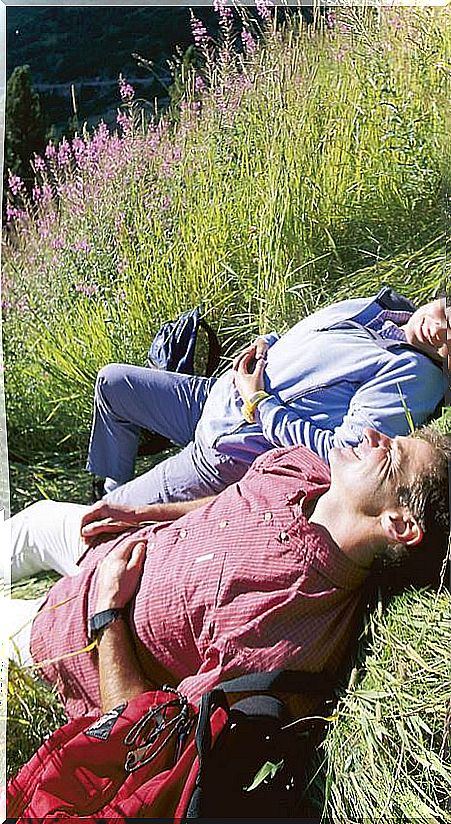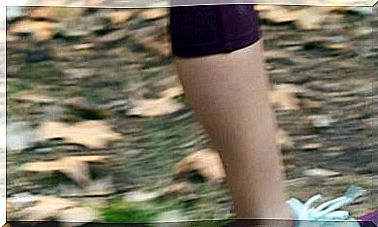3 Exercises As A Couple To Feel The Body In Nature
We propose a series of exercises to be carried out with full consciousness during a walk as a couple. You will feel very alive and connected!

The benefits of walking outdoors and surrounded by greenery are enhanced by paying attention to
body signals and posture.
We propose a conscious walk that helps you feel alive, more centered and in harmony.
1. The game of feeling
We will do the exercises during a walk and at one point we can pause to play to feel. This exercise improves communication between the brain and every part of the body.
- Ask your walking partner to sit or lie on the ground and close their eyes.
- Instruct him to breathe slowly and deeply and to pay attention to bodily sensations.
- You can briefly explain what you are going to do next:
- Put your hand on some part of the body and say: “feel this”.
- The other person does not have to respond, they can just focus on perceiving the contact.
- You can touch it with the whole palm of your hand, with the tip of a finger or with your knuckles, exerting different degrees of pressure, as long as it is pleasant.
- Between contact and contact, always wait a few seconds to give him time to feel. Each contact on one side of the body can be repeated later on the other side. You can follow an itinerary, first from head to hand and then from head to toe.
- Now ask your partner to do the same for you.
2. In search of balance
Exercises that work on balance teach the body to discover its possibilities. They also strengthen joints such as knees and ankles.
- Close your eyes and try to balance on one leg. Not having a visual reference is not as easy as it might seem at first.
- To complicate the exercise, you can take the leg that has been in the air first as far forward as possible and then backwards, always keeping it straight.
- We continue to balance on one leg, but now with our eyes open and facing a partner. It’s about playing unbalanced with your hands. The supporting leg can be freely changed (but doing it in one jump, never supporting both at the same time).
- With your feet slightly apart, do three vertical jumps in a row, but the last landing do it with only one supporting foot (it is important to bend the knee when landing with that foot so that the impact on the joint is not excessive).
- You can try one leg first and then the other.
3. Basic stretching
Stretching before and after walking prevents injuries and helps to recognize tension or discomfort. Perform the following exercises slowly and gently.
- Standing, lower your torso as if you were going to sit on your heels. Breathe regularly for about 5 seconds. Get up and repeat twice.
- Roll your shoulders forward gently three times while breathing normally. Repeat in the opposite direction.
- Turn your head to the side as much as possible and hold this stretch for 5 seconds. Do the same to the right. Repeat twice. Then gently hold the nape with your hands and throw your head back for 5 seconds; bring your chin to your chest and hold for 5 more seconds. Repeat twice. Bring the left ear closer to the left shoulder for 5 seconds and then the same to the right. Repeat twice.
- With your legs slightly apart and your knees relaxed, bend your body forward little by little, starting with the head, vertebra by vertebra. The intention is that the fingers touch the ground. Take six to ten breaths and move up vertebra to vertebra.









